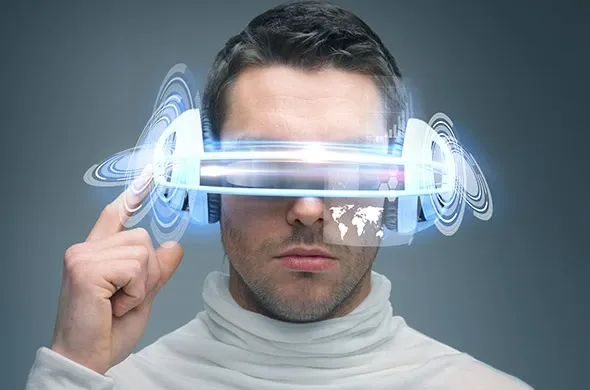Geopolitics to Increase Reliance on Local Cloud Providers in Western Europe
61% of Western European CIOs and IT leaders said geopolitical factors will increase their reliance on local or regional cloud providers, according to a survey from Gartner.

Computer-generated worlds are awe-inspiring and fascinating, to say the least. On top of that, they are more accessible than ever. For instance, virtual reality statistics say that VR had more than 171 million active users back in 2018.
Of course, the number of users kept growing in the meantime. The AR and VR technologies are expanding at an incredible pace, and they show no signs of stopping. So, let's see what we could expect from virtual reality in the years to come.
What Makes VR Attractive and Appealing?
VR and AR have a long-lasting presence in our culture. Ever since the late 1960s, all sorts of devices have tried to create a multimedia experience. Yet, we had to wait until the 2010s to receive a fully immersive head-mounted display. With the appearance of Oculus Rift, the game was raised to a whole new level.
According to virtual reality statistics, more than 42 million people have tried a VR headset at least once during 2019. Some of the reasons for the widespread popularity of VR and AR are enjoyment and excitement. Virtual reality devices allow users to immerse themselves in a magnificent digital world. Likewise, head-worn devices are becoming cheaper and more affordable, as well.
What to Expect in the VR Industry in 2020?
The statistics on VR show a surge in the popularity of these devices in the last couple of years. For instance, wearables such as the PlayStation VR, HTC Vive, or the Oculus Rift are selling like lemonade on a hot day. Well, experts agree that the wheels of evolution are already in motion and that no man can stop the progress of VR and AR.
For instance, it is expected that the virtual reality market will exceed the value of $34 billion by 2023. Together with AR, the entire industry could reach a whopping $160 billion in three years. At the moment, the US and China are investing more than $6 billion each in the development of virtual reality technologies. Even so, the total spending could increase by as much as 75.5% by the end of 2020!
The Rise of Mobile Head-Mounted Displays
As we all know, smartphones have penetrated every area of our lives. Well, it seems that VR and AR are going down the well-trodden path as well. Mobile head-worn displays will account for 75% of all VR devices in 2020. These days, mobile headsets are a hot topic in the tech community.
Products such as Google Cardboard or the Samsung Gear VR are changing the game. They are providing users with untethered access to impressive digital worlds. All you need to do is connect the headset to your phone, and the fun can start. At the same time, as many as 60% of parents in the US are worried about the health and safety issues of using virtual reality applications.
Future Applications of VR and AR
Virtual reality systems could revolutionize the world of tomorrow. Even today, VR and AR are offering a new experience and awe-inspiring possibilities. In the future, virtual reality technologies will expand beyond the gaming industry. Nowadays, the gaming industry holds as much as 40.5% of the market share when it comes to virtual reality.
Yet, other areas of human activity will see a rise of VR and AR in the years to come. The military and healthcare are leading the way, but the automotive industry is not far behind. Also, VR and AR devices will provide lots of benefits in the world of architecture and real estate.
The potential of virtual reality might be beyond our intellectual capabilities at the moment. However, human imagination, paired with modern technologies, could take our world to new heights. Virtual reality is growing at a rapid pace, and we should just sit back and enjoy the ride.